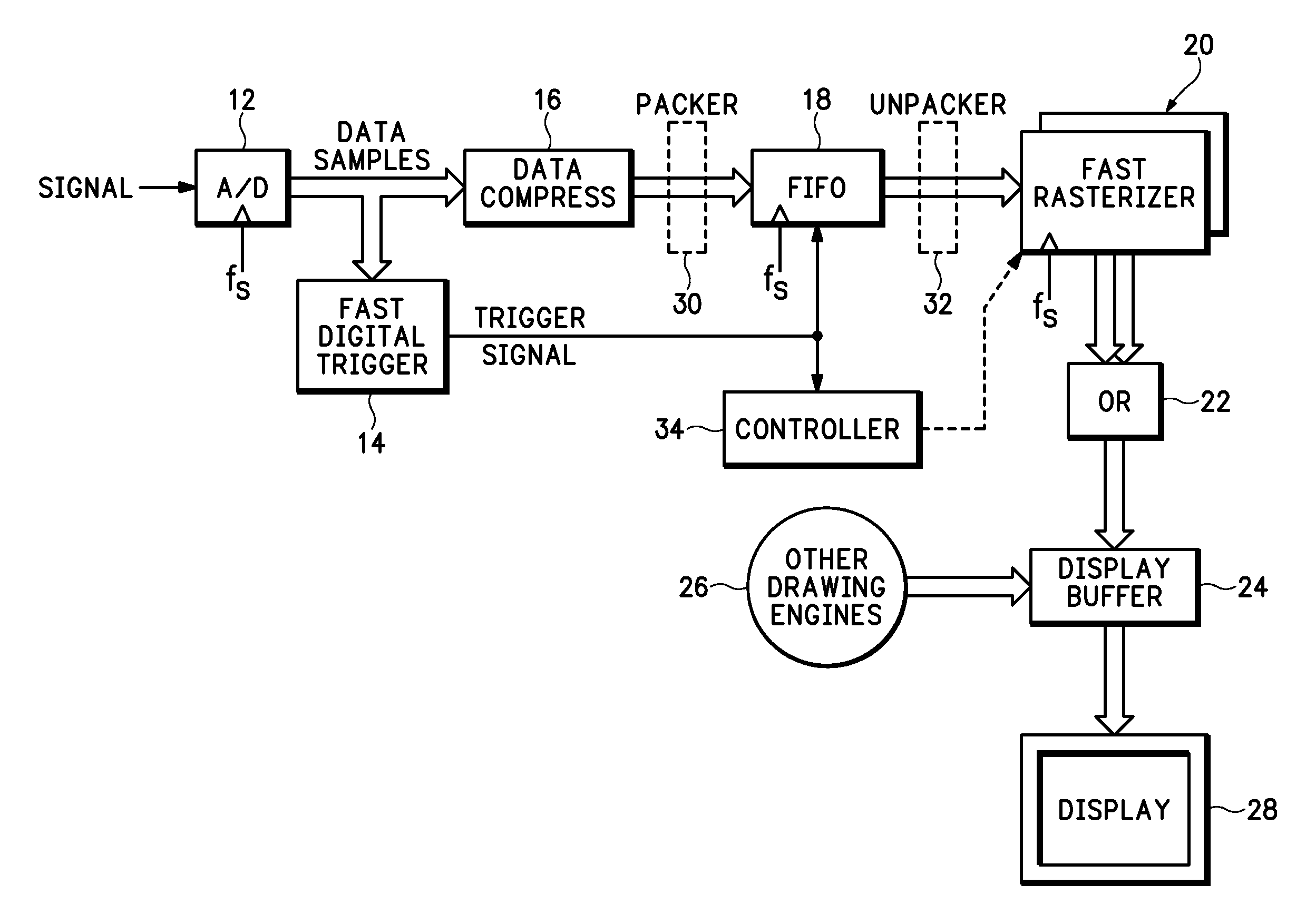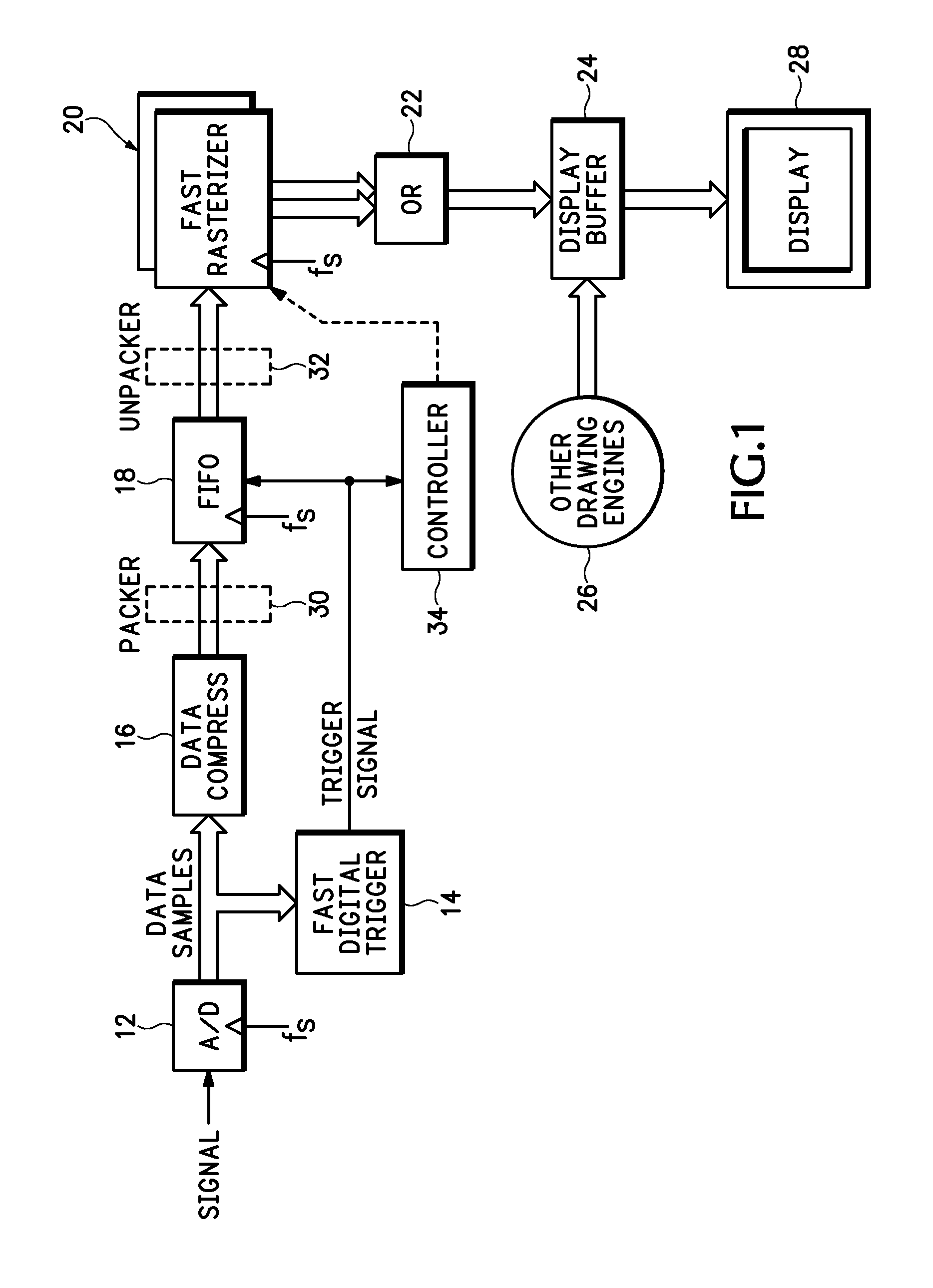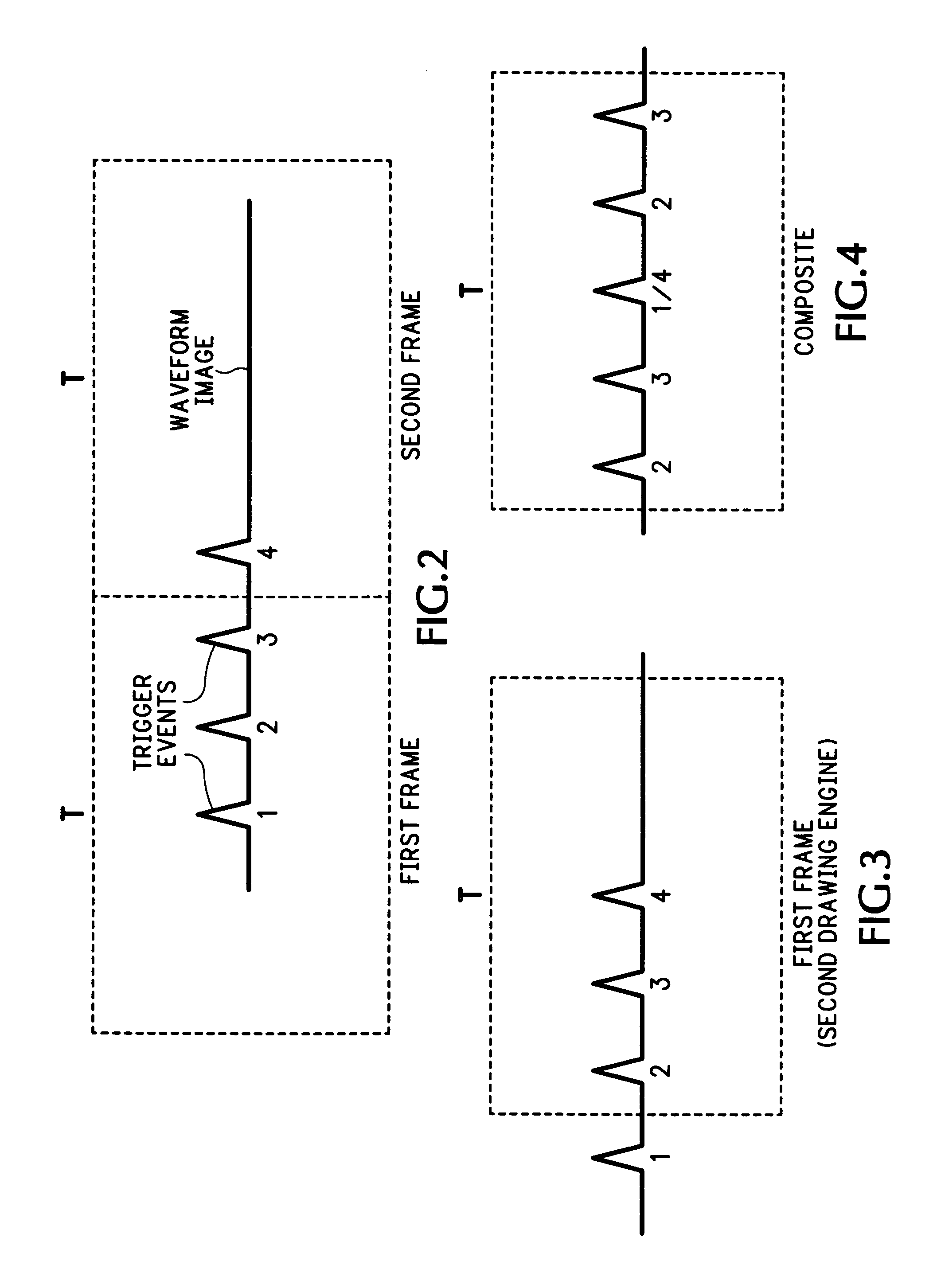No dead time data acquisition
a data acquisition and dead time technology, applied in the field of data acquisition, can solve the problems of rare incorrect operation, missed waveforms that show the incorrect operation of the circuit, and dead tim
- Summary
- Abstract
- Description
- Claims
- Application Information
AI Technical Summary
Benefits of technology
Problems solved by technology
Method used
Image
Examples
Embodiment Construction
[0010] Referring now to FIG. 1 a digital data acquisition architecture for a measurement instrument, such as a digital oscilloscope, is shown that allows every valid trigger event to be displayed. There are four requirements to make “no dead time” possible, which are described below. By definition “no dead time” means all trigger events are shown on a display screen, every waveform image associated with the trigger events has a trigger event at a specified trigger location T on the display screen, and it is not necessary (or desirable) to display all trigger events at the specified trigger location.
[0011] Every trigger event must be detected, even when trigger events arrive at the full bandwidth of the measurement instrument, so fast trigger recognition is required. In addition to recognizing each trigger event, the time of each trigger event relative to the acquired data must be computed. Therefore the signal being monitored is converted by an analog-to-digital converter (ADC) 12 ...
PUM
 Login to View More
Login to View More Abstract
Description
Claims
Application Information
 Login to View More
Login to View More - R&D
- Intellectual Property
- Life Sciences
- Materials
- Tech Scout
- Unparalleled Data Quality
- Higher Quality Content
- 60% Fewer Hallucinations
Browse by: Latest US Patents, China's latest patents, Technical Efficacy Thesaurus, Application Domain, Technology Topic, Popular Technical Reports.
© 2025 PatSnap. All rights reserved.Legal|Privacy policy|Modern Slavery Act Transparency Statement|Sitemap|About US| Contact US: help@patsnap.com



